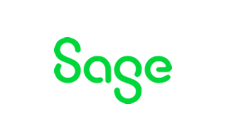Dealing with goods that never leave the EU
A GB business imports goods from the EU. However, for one order the goods will be shipped directly from the supplier in one EU country to the customer in another EU country. How does Brexit give rise to VAT issues here?
-
Planning ahead for pension salary sacrifice changes
From 6 April 2029, both employers and employees will be required to pay Class 1 NI on pension contributions in excess of £2,000 made through a salary sacrifice arrangement. What can you do about it?
-
Marginal relief - responding to an HMRC nudge letter
HMRC is running a campaign to clamp down on incorrect claims for corporation tax marginal relief (MR). In what circumstances might you be challenged by HMRC and how should you respond?
-
Can you claim input tax on costs linked to electric cars?
Your business intends to go green and buy new electric cars. Can you claim input tax on the purchase of the vehicles and their subsequent fuel costs? Additionally, what recent change has been announced by HMRC?

End of triangulation
Prior to the end of the Brexit transitional period, this situation would have produced an easy VAT outcome because of an EU simplification process known as “triangulation”. Let’s say A, B and C are all VAT registered and based in different EU countries: A invoices B, B invoices C and the goods go directly from A to C. The invoices issued by A and B would both have been zero-rated, with C accounting for the VAT with a reverse charge entry on its own return.
Triangulation is still available if the business is based in Northern Ireland, which is still part of the EU’s single market.
Domestic VAT now charged
Since 1 January 2021 the situation is very different because Brexit means the triangle is broken. The supplier in the first EU country must now charge domestic VAT on the sale of these goods, e.g. 19% VAT for Germany, 25% VAT for Sweden, etc.
The business cannot claim foreign VAT as input tax on its UK VAT return. It is also blocked from claiming this VAT by submitting a 13th Directive VAT refund claim to the EU country where they have paid VAT because it is are selling on the goods in question.
Overseas VAT registration
The commercial reality is that the business is either taking ownership of the goods in the EU country of the supplier or the final customer. It is more likely it will be the customer’s country. It is selling goods in this country, so will need to be VAT registered there. There is no sales threshold before needing to register for VAT - a zero threshold applies. The position is now as follows:
- the supplier will zero-rate their sale to the business, quoting the new EU VAT number on their sales invoice
- the GB business will account for the VAT (and claim input tax) on the VAT return in the EU country where it is now registered; and
- it will charge domestic VAT when it sells the goods in that country to yje customer.
Goods come to GB first?
If a business brings goods into GB from the EU and then ships them out again there will be an export of goods out of the EU and then a reimport of the same goods when they are sold on. This is inefficient as far as logistics are concerned but also means import and export declarations are needed each time there is a movement into or out of the GB/EU. The overseas VAT registration and a direct movement of goods is probably the best option.
A business might be tempted to ask an EU supplier to sell goods directly to the EU customer, invoicing the supplier for a sales commission. This will deal with the VAT problem but will mean that customers will know the profit margin, which may result in them dealing directly with the supplier for future orders.





 This website uses both its own and third-party cookies to analyze our services and navigation on our website in order to improve its contents (analytical purposes: measure visits and sources of web traffic). The legal basis is the consent of the user, except in the case of basic cookies, which are essential to navigate this website.
This website uses both its own and third-party cookies to analyze our services and navigation on our website in order to improve its contents (analytical purposes: measure visits and sources of web traffic). The legal basis is the consent of the user, except in the case of basic cookies, which are essential to navigate this website.